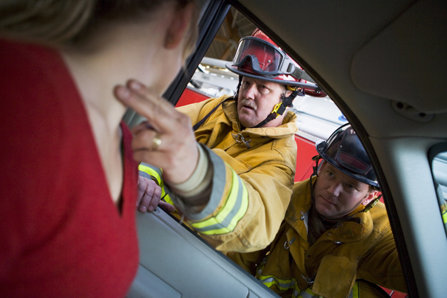2020, Death Rates, and Drug Overdoses

Fatal drug overdoses are tragic because every overdose is entirely preventable. And to make the issue worse, overdoses are becoming more common. According to the Journal of the American Medical Administration, accidental deaths (overdoses, falls, injuries, etc.) are up 10% from last year. New reports indicate that drug overdoses are now one of the leading causes of accidental, preventable death in the United States.
The American people must recognize that the ongoing rise of fatal drug overdoses in America is a legitimate National Public Health Emergency and act accordingly.
The Findings
A March 2021 study published in JAMA found that unintentional injuries were the fourth leading cause of death in 2020, behind Covid-19, cancer, and heart disease. About 192,176 Americans died from unintentional injuries in 2020, 19,136 more deaths than the 173,040 unintentional injury deaths in 2019.
“Increases in unintentional injury deaths in 2020 were largely driven by drug overdose deaths.”

But what type of unintentional injuries caused the uptick in deaths? According to the researchers, “Increases in unintentional injury deaths in 2020 were largely driven by drug overdose deaths.” So while the Covid-19 pandemic surged and captured most of the public health focus, fatal drug overdose rates crept higher and higher.
Other institutions verified and corroborated the findings of the JAMA report. The Centers for Disease Control and Prevention continuously releases information on total drug overdose deaths for any given 12-month period. The most recent data they have published show overdose deaths (all of which classify as unintentional injury deaths) for September 2019 to September 2020. According to their findings, at least 88,000 people died from drug overdoses during that period.
Compare that statistic to the fatal drug overdoses for the September 2018 to September 2019 12-month period, when 68,000 Americans died from drug overdoses. The death toll for that year is still a grievously high number, but the data suggests about 20,000 more people died from drug overdoses in 2020 than in 2019.
The CDC also puts America’s addiction crisis into perspective, showing how this is not just a crisis that got worse with Covid. This has been a serious public health problem that the country has failed to combat effectively for over twenty years. Quoting the CDC data, “Nearly 841,000 people have died since 1999 from a drug overdose. In 2019, 70,630 drug overdose deaths occurred in the United States. The age-adjusted rate of overdose deaths increased by over 4% from 2018 (20.7 per 100,000) to 2019 (21.6 per 100,000). Opioids—mainly synthetic opioids (other than methadone)—are currently the main driver of drug overdose deaths. 72.9% of opioid-involved overdose deaths involve synthetic opioids.” If this issue is not given the attention and focus it deserves, it’s likely the problem will just get worse.

American Life Expectancy is Going Down
One of the best metrics for measuring the overall health of a population is life expectancy. Sadly, American life expectancy has declined in recent years, partially because of the addiction epidemic. The Centers for Disease Control and Prevention released a Vital Statistics data brief on the issue. Quoting their findings, “Life expectancy at birth represents the average number of years that a group of infants would live if they were to experience throughout life the age-specific death rates prevailing during a specified period. In the first half of 2020, life expectancy at birth for the total U.S. population was 77.8 years, declining by 1.0 year from 78.8 in 2019. Life expectancy at birth for males was 75.1 years in the first half of 2020, representing a decline of 1.2 years from 76.3 years in 2019. For females, life expectancy declined to 80.5 years, decreasing 0.9 year from 81.4 years in 2019.”
American life expectancy declined in years prior to 2020, namely 2014-2017. But the drop in life expectancy from 2019 through 2020 was the most alarming by far. Exacerbated by the death toll from the Covid-19 pandemic, rising drug overdoses, and other factors, Americans lost an average of one year off their lifespan as a result of 2020.
We Cannot Lose Sight of Rising Overdoses
Much has occurred in the last year that has tunnel-visioned most of America’s attention, especially in matters of public health. The Covid-19 pandemic left the country severely damaged, health-wise, economically, morally, and spiritually. But as America’s attention has focused on the pandemic and its effects, other public health crises have continued and gotten worse. The addiction epidemic is one such crisis.
The death rates have not yet been finalized for the 12 months from January 2020 to December 2020, but drug overdoses certainly soared much higher in 2020 than in 2019. While much of this is likely because of the trials of Covid and the far-reaching effects of the pandemic, the foundation upon which the addiction crisis was built existed long before Covid entered America. And with that in mind, the National Public Health Emergency that is addiction will continue long after Covid is brought under control.
That is why American families, communities, towns, cities, counties, and states must come together to combat the addiction epidemic with force proportional to the severity of the crisis. With tens of thousands of people dying from drug overdoses every year and addiction being one of the leading causes of death, there could not be a more fitting moment to tackle this epidemic with dedication and commitment.
Those who know someone who is addicted to drugs and alcohol should do everything they can to help their loved ones get off of drugs once and for all. The best way to do this is with the help of residential drug and alcohol addiction treatment centers. If you know someone who is hooked on drugs and alcohol and who cannot stop using, please get them into a rehab center as soon as possible. As long as your loved one is using drugs, their life is at risk.
And those who do not know someone who is using drugs or alcohol should still do their best to help implement prevention efforts within their communities. It is much easier to educate someone on why they would never want to use drugs than to help someone get off drugs once they are already hooked.
Addiction is a life-threatening crisis that can ruin families and destroy communities in the blink of an eye. And as the data shows, this country’s drug problem is getting worse (and more lethal). Now more than ever, we must come together, work together, and overcome America’s addiction emergency.
Sources:
- https://jamanetwork.com/journals/jama/fullarticle/2778234
- https://www.cdc.gov/nchs/nvss/vsrr/drug-overdose-data.htm
- https://www.cdc.gov/drugoverdose/data/statedeaths.html
- https://www.cdc.gov/nchs/data/vsrr/VSRR10-508.pdf


